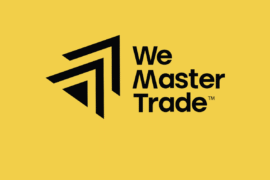This article may contain references to products or services from one or more of our advertisers or partners. We may receive compensation when you click on links to those products or services. Nonetheless, our opinions are our own.
The information presented in this article is accurate to the best of our knowledge at the time of publication. However, information is subject to change, and no guarantees are made about the continued accuracy or completeness of this content after its publication date.
When you choose to give to a cause you care about, it’s usually because you really want to help. You see your donation making a difference, helping those in need, and making the world a better place. But what if your donation, which you thought was good, is actually doing more harm than good? We’ll learn eight surprising facts about giving to charity that may make you question what you thought you knew and encourage you to think carefully about where and how you give. Sometimes, trying to help others can have bad effects that you didn’t mean to happen.
- The Hidden Consequences of Your Generosity
- The Pitfalls of Band-Aid Solutions in Charity
- Why Supporting Local Initiatives Can Make a Bigger Impact
- Exploring the Impact of Unsolicited Donations on Communities
- How to Align Your Values with Your Philanthropic Efforts
- Making Informed Choices About Your Contributions
- Conclusion
- Frequently Asked Questions
- What are the common misconceptions about charitable donations?
- How can donations perpetuate dependency?
- Are there instances where donations can cause harm to communities?
- What is the impact of donating without understanding the local context?
- Can some charitable organizations have hidden agendas?
- What role does transparency play in effective donations?
- How can individuals ensure their donations create a positive impact?
- What alternatives to monetary donations can be more beneficial?
- Recommended Reads
You might believe that your contributions are making a notable difference, but have you paused to consider the ripple effects of your kindness? Often, well-intentioned donations can inadvertently perpetuate dependency rather than empower those in need. Instead of fostering self-sufficiency, they may reinforce a cycle where recipients wait for assistance instead of seeking sustainable solutions. By donating without a clear understanding of the underlying issues, you might unintentionally undermine local economies or organizations working toward lasting change.
Also, have you thought about the administrative costs and inefficiencies that arise in some charities? Many organizations allocate a significant portion of funds to overhead and salaries instead of direct aid.
Charity Resource Allocation
| Charity Name | Percentage for Direct Aid | Percentage for Administrative Costs |
|---|---|---|
| Helping Hands | 70% | 30% |
| Hope Foundation | 50% | 50% |
| Care Network | 40% | 60% |
When choosing where to donate, research organizations that prioritize transparency and direct impact. This ensures your generosity contributes effectively toward sustainable progress.
The Pitfalls of Band-Aid Solutions in Charity
When you donate, you may feel satisfied, believing you’re making a difference. But that warmth can sometimes cloud your judgment. Band-Aid solutions in charity often provide temporary relief without addressing root causes, making your generosity less effective than you think.
Common Pitfalls:
Perpetuating Dependency: Donations can foster a culture of reliance rather than encourage self-driven solutions.
Lack of Accountability: Without oversight, funds may be misallocated or lost to inefficiencies.
Superficial Solutions: Providing food or clothing can obscure the need for long-term strategies in education or infrastructure.
Instead of a quick gift, consider supporting partnerships that promote empowerment and sustainable development.
Why Supporting Local Initiatives Can Make a Bigger Impact
It’s easy to gravitate toward large, well-known charities, but supporting local initiatives can make your impact more direct and lasting. By directing your funds locally, you can:
Empower local leaders who understand specific community needs
Stimulate the local economy through reinvestment
Foster engagement and civic responsibility
See the results of your contribution firsthand
Efficiency of Local vs. Large Initiatives
| Type of Initiative | % of Funds for Direct Services | % of Funds Spent on Overhead |
|---|---|---|
| Large Charities | 60% | 40% |
| Local Initiatives | 85% | 15% |
When you give locally, more of your money goes to programs, not administration.
Voted "Best Overall Budgeting App" by Forbes and WSJ
Monarch Money helps you budget, track spending, set goals, and plan your financial future—all in one app.
Get 50% OFF your first year with code MONARCHVIP
Exploring the Impact of Unsolicited Donations on Communities
Giving unsolicited donations may seem generous, but they can create challenges if they don’t align with actual needs.
Resource Misallocation: Charities may have to manage and store unneeded items.
Dependency Issues: Repeated aid can discourage local solutions.
Supply vs. Demand Mismatch: Excess goods can clutter communities.
Cultural Insensitivity: Misaligned aid may offend or disrupt local norms.
Example of Unsolicited Donation Effects
| Type of Donation | Potential Impact |
|---|---|
| Clothing | May flood local thrift shops and reduce their income |
| Toys | May distract from more pressing educational needs |
| Food Items | May lead to waste if not culturally appropriate or aligned with actual demand |
Thoughtful giving requires understanding a community’s specific needs before sending material aid.
How to Align Your Values with Your Philanthropic Efforts
Aligning your values with how and where you give is essential for meaningful impact.
Steps to Align Your Giving:
Identify Passions: What issues are most important to you? The environment, health, or education?
Research Organizations: Ensure they align with your principles and share impact metrics.
Engage Personally: Attend events, volunteer, or speak with community leaders.
Assess Impact: Ask where your money goes. Does it fund programs or cover high overhead?
Example Value Alignment
| Organization | Mission Statement | Impact Area |
|---|---|---|
| Local Food Bank | To alleviate hunger and promote food justice | Community Welfare |
| Wildlife Conservation Group | Protecting endangered species through habitat restoration | Environmental Protection |
When your donations align with your beliefs, your contributions feel more purposeful and create deeper satisfaction.
Making Informed Choices About Your Contributions
Giving generously is commendable, but it’s also essential to ensure your money is making a meaningful impact. Ask the right questions before you donate.
What to Consider:
Research the Organization: Look for reviews, audits, and operational transparency.
Evaluate Effectiveness: Look for data-backed results, not just good intentions.
Understand Cultural Context: Poorly informed giving can unintentionally disrupt local progress.
Factors That Affect Donation Impact
| Factors to Consider | Potential Issues |
|---|---|
| Transparency | Mismanagement of funds |
| Effectiveness | Programs without measurable outcomes |
| Community Needs | Disruption of local initiatives |
Giving with knowledge isn’t just about being nice; it’s also about being responsible and thinking ahead.
Conclusion
When you think about your charitable work, keep in mind that giving well means more than just writing a check or giving things away. Donations that are well thought out and well researched can make a real difference, but donations that are poorly planned or based on bad information can slow progress. You can make real positive change by focusing on the root causes of problems, supporting local efforts, and making sure that your giving matches what communities really need. Giving is only part of charity; it’s also about making long-term growth possible, giving people power, and making communities stronger and more resilient. Giving with thought not only helps the people you want to help, but it also makes you feel better about yourself. If you take the time to learn about the complexities of giving to charity, you can be sure that your gifts will have a lasting and positive effect. Keep these things in mind and keep making smart, thoughtful decisions that will really help other people.
Frequently Asked Questions
What are the common misconceptions about charitable donations?
Many believe all donations directly help people in need. In reality, some nonprofits allocate large portions to administrative expenses, diluting their impact.
How can donations perpetuate dependency?
Continuous aid can sometimes discourage communities from developing long-term solutions, creating cycles of reliance rather than independence.
Are there instances where donations can cause harm to communities?
Yes. Free goods can devalue local products, hurt small businesses, or drive inflation, especially when they outcompete locally sourced options.
What is the impact of donating without understanding the local context?
Donations without cultural or contextual awareness may not meet actual needs, wasting resources and sometimes causing offense or harm.
Some may advance religious or political goals that don’t align with local needs or values, leading to misused resources and conflicted outcomes.
What role does transparency play in effective donations?
Transparency is essential for trust. Organizations that don’t report fund usage may mismanage resources or operate inefficiently.
How can individuals ensure their donations create a positive impact?
Do your homework. Look for a track record of success, local engagement, and clear spending plans. Supporting local efforts can also increase impact.
What alternatives to monetary donations can be more beneficial?
Time, skilled volunteer work, or in-kind goods that directly meet requested needs can often have more meaningful effects than cash alone.

Reviewed and edited by Albert Fang.
See a typo or want to suggest an edit/revision to the content? Use the contact us form to provide feedback.
At FangWallet, we value editorial integrity and open collaboration in curating quality content for readers to enjoy. Much appreciated for the assist.
Did you like our article and find it insightful? We encourage sharing the article link with family and friends to benefit as well - better yet, sharing on social media. Thank you for the support! 🍉
Article Title: How to Donate Wisely and Avoid Causing Unintended Harm
https://fangwallet.com/2025/08/04/how-to-donate-wisely-and-avoid-causing-unintended-harm/The FangWallet Promise
FangWallet is an editorially independent resource - founded on breaking down challenging financial concepts for anyone to understand since 2014. While we adhere to editorial integrity, note that this post may contain references to products from our partners.
The FangWallet promise is always to have your best interest in mind and be transparent and honest about the financial picture.
Become an Insider

Subscribe to get a free daily budget planner printable to help get your money on track!
Make passive money the right way. No spam.
Editorial Disclaimer: The editorial content on this page is not provided by any of the companies mentioned. The opinions expressed here are the author's alone.
The content of this website is for informational purposes only and does not represent investment advice, or an offer or solicitation to buy or sell any security, investment, or product. Investors are encouraged to do their own due diligence, and, if necessary, consult professional advising before making any investment decisions. Investing involves a high degree of risk, and financial losses may occur including the potential loss of principal.
Source Citation References:
+ Inspo
Klampfer, F. (2004). Moral responsibility for unprevented harm. Acta Analytica, 19(33), 119-161.












































